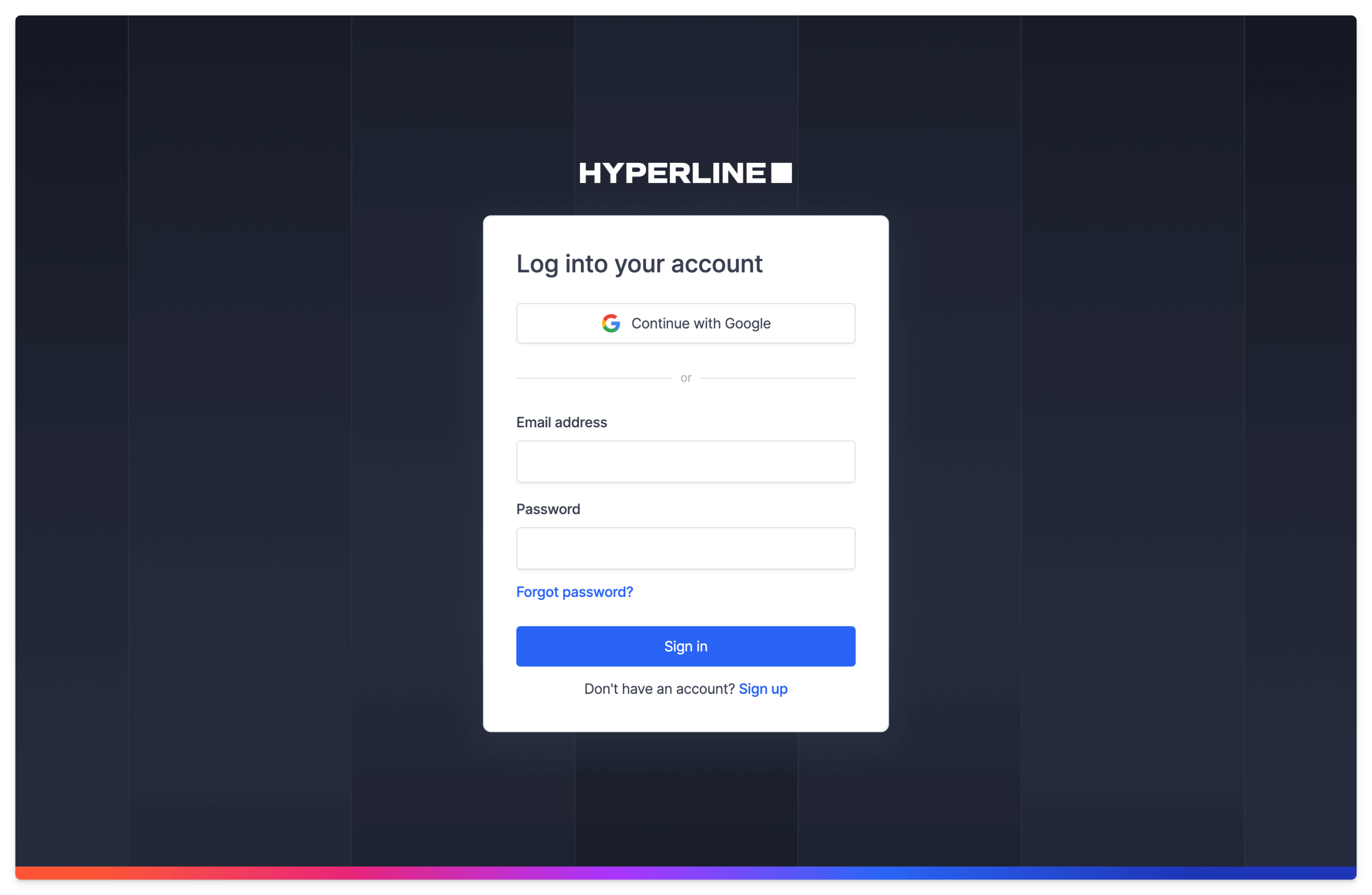New customer page and subscription details
This is our first rollout toward our largest iteration to date in Hyperline: our new subscription model with way more flexibility.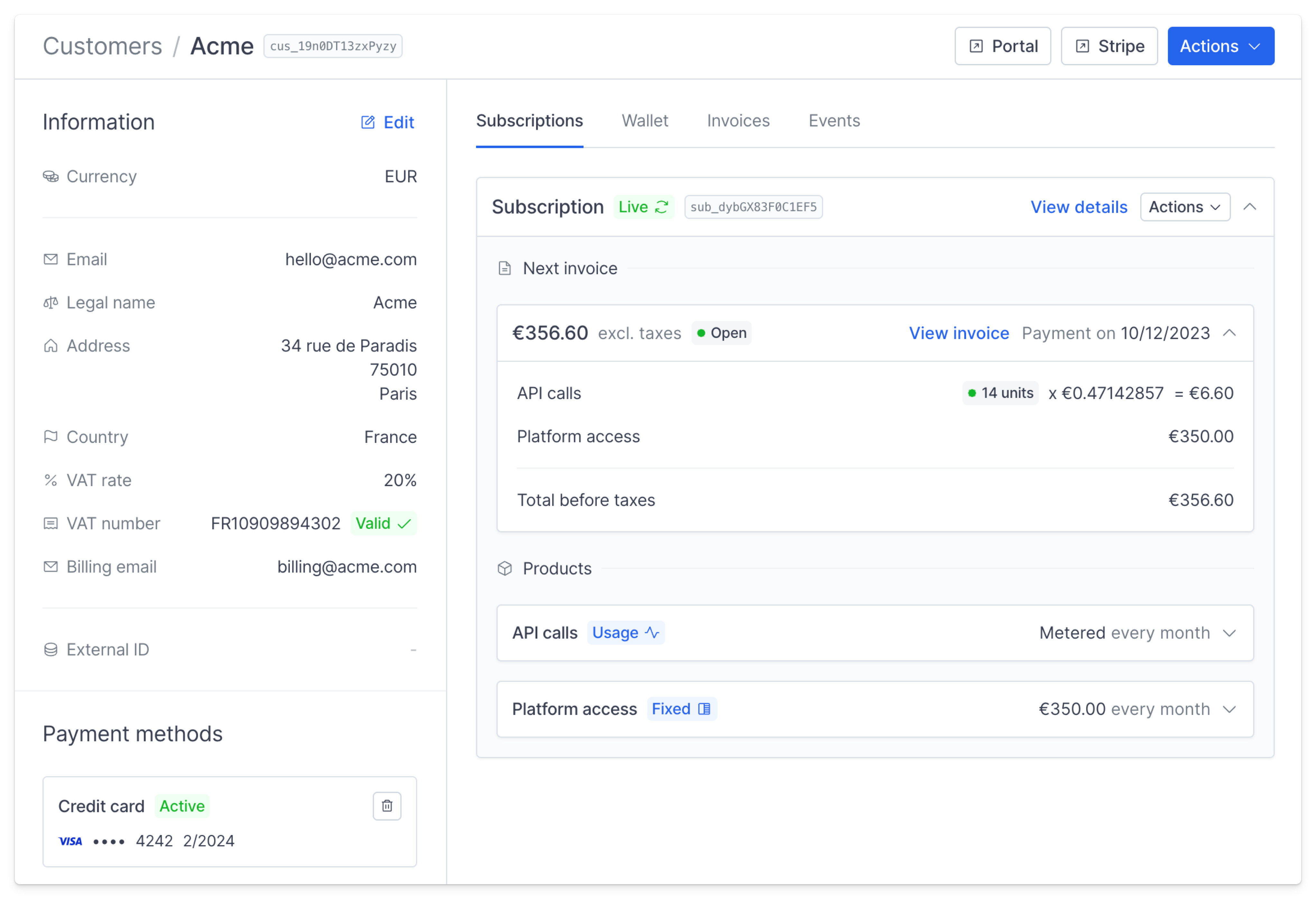
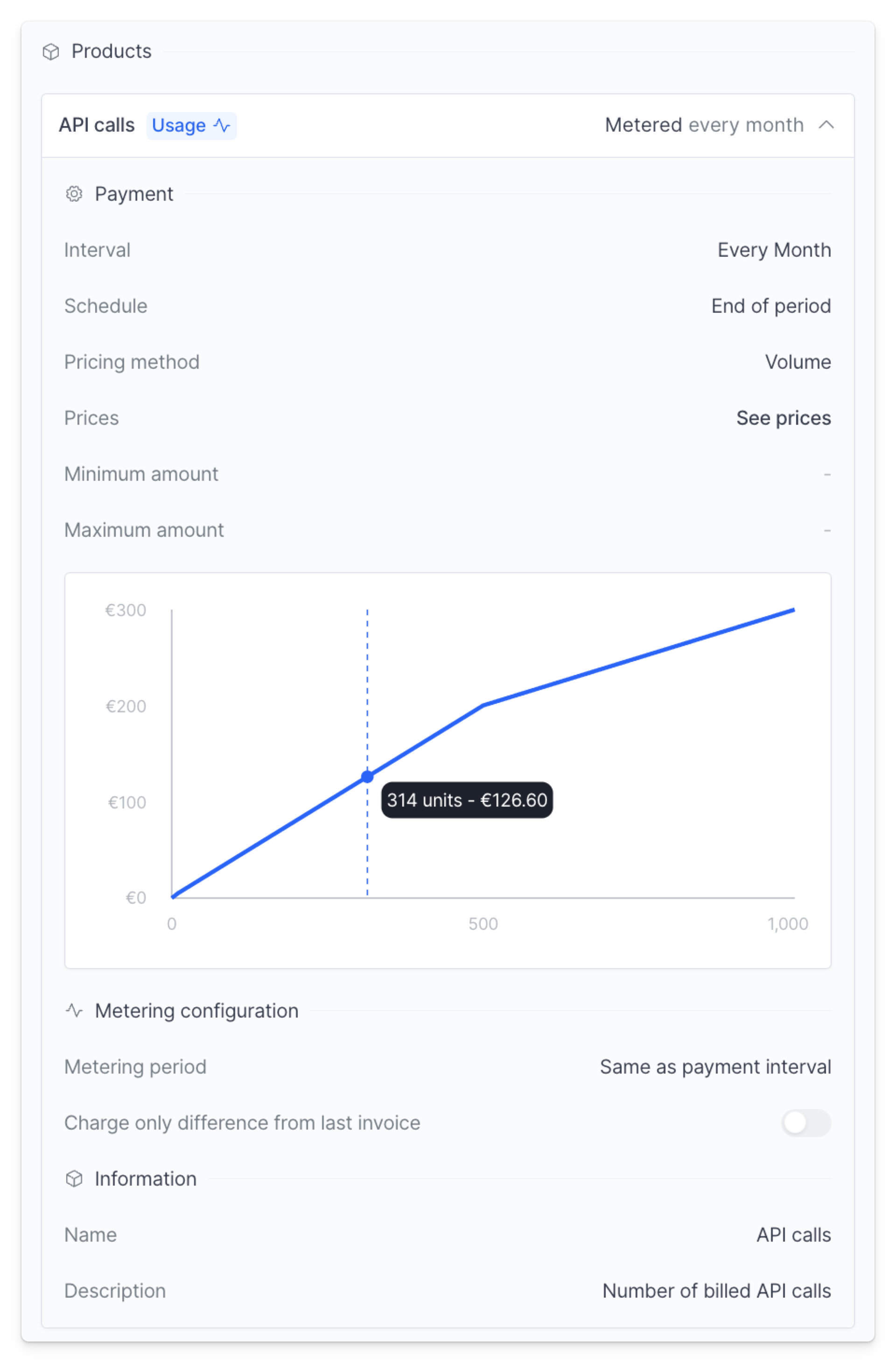
Better currency management
We’ve made updates on how we handle currencies in Hyperline, especially when you invoice in multiple currencies, to manage more complexity out of the box for you.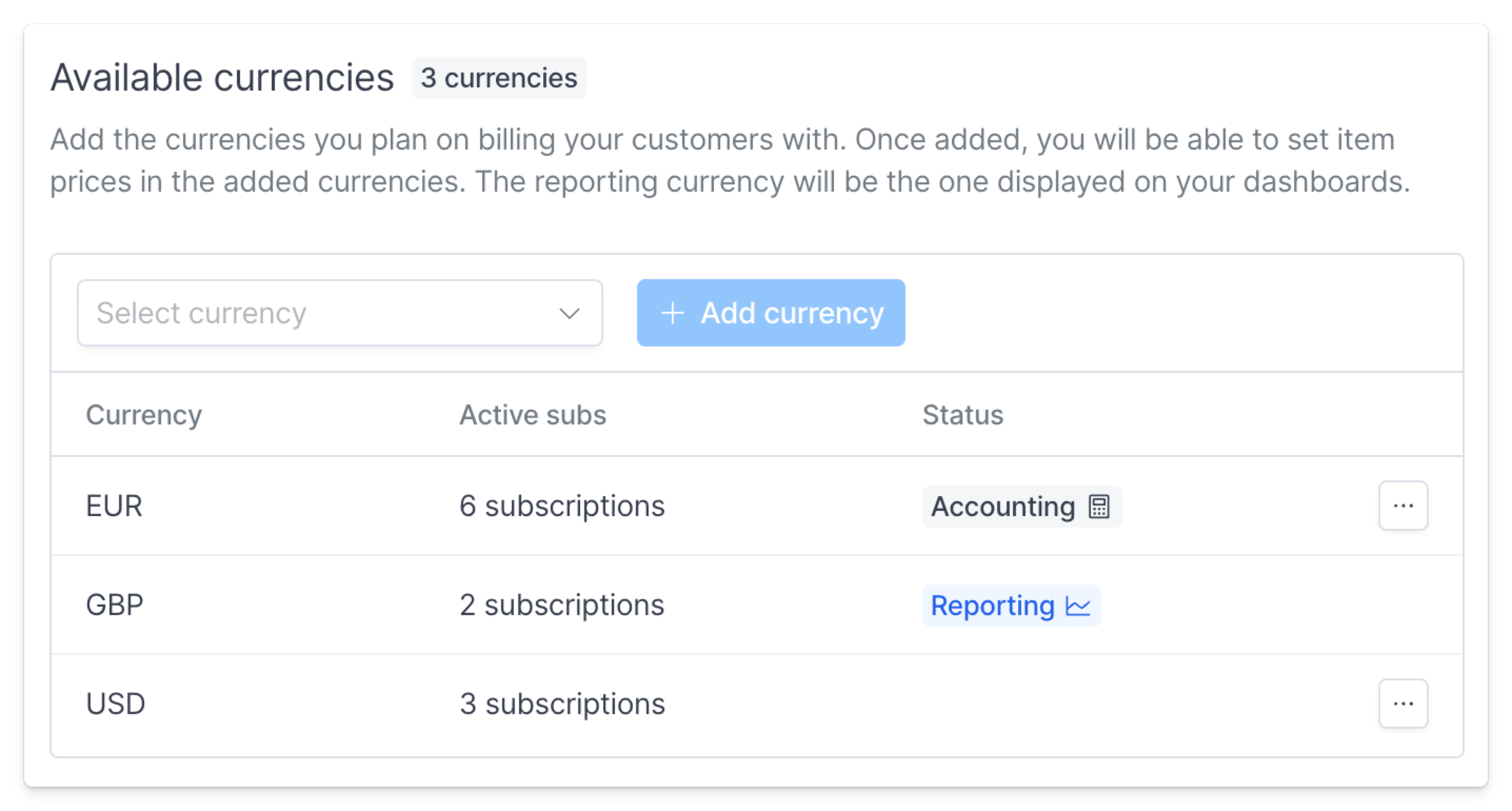
- the accounting currency: automatically set by us and depending on your company country. This currency cannot be changed as it’s used to maintain your accounting ledger with your country’s legal requirements. This only affects the footer of your invoices, where we’ll display the converted amount when needed;
- the reporting currency: configured by you, used in the dashboard page, and revenue analytics computations.
ACH Direct Debit 🇺🇸
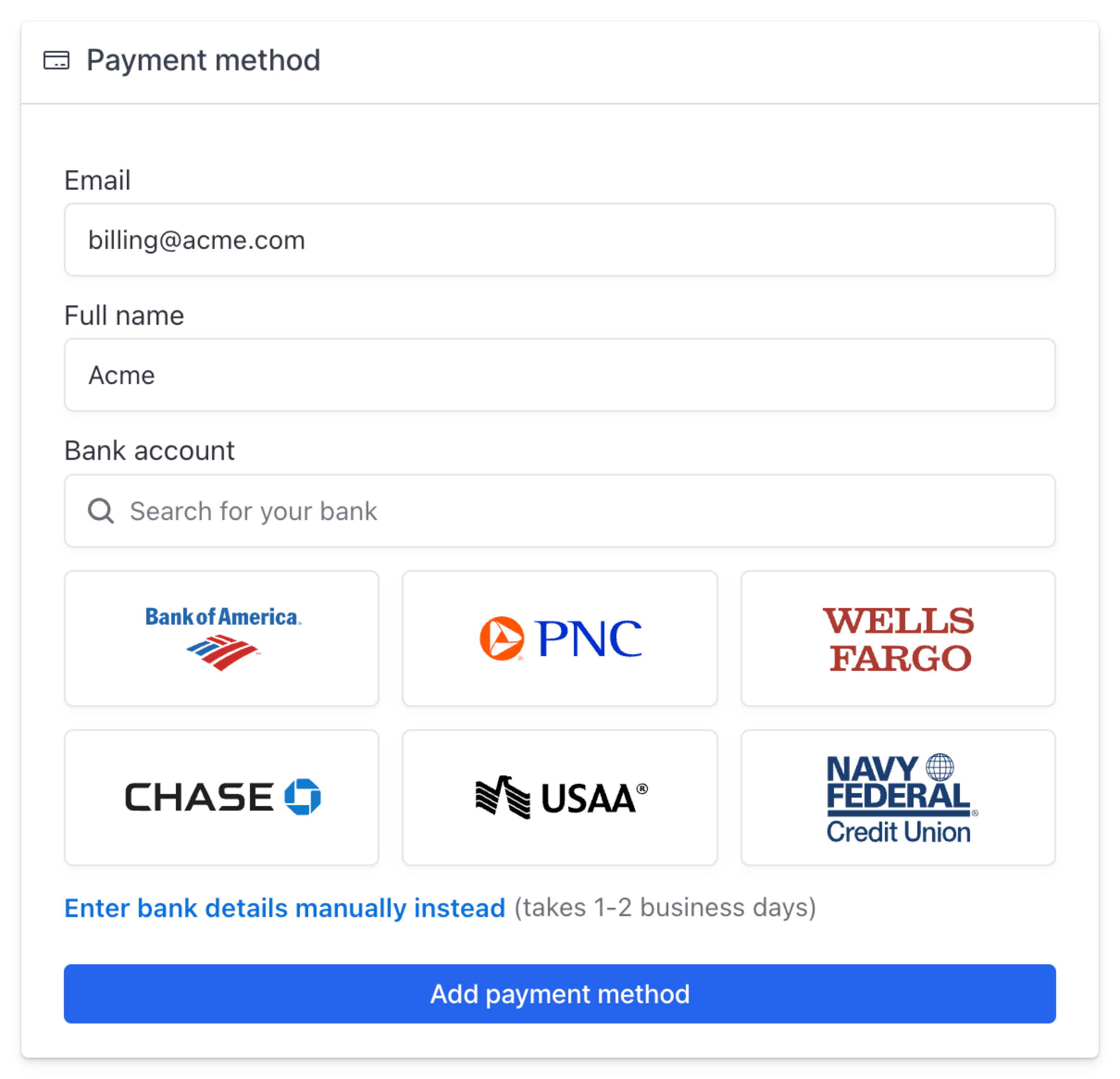
Forward customer emails
You can now set up in your settings custom emails where we’ll forward emails sent to your customers. This allows your finance team, accountant, or anyone else to stay in the loop.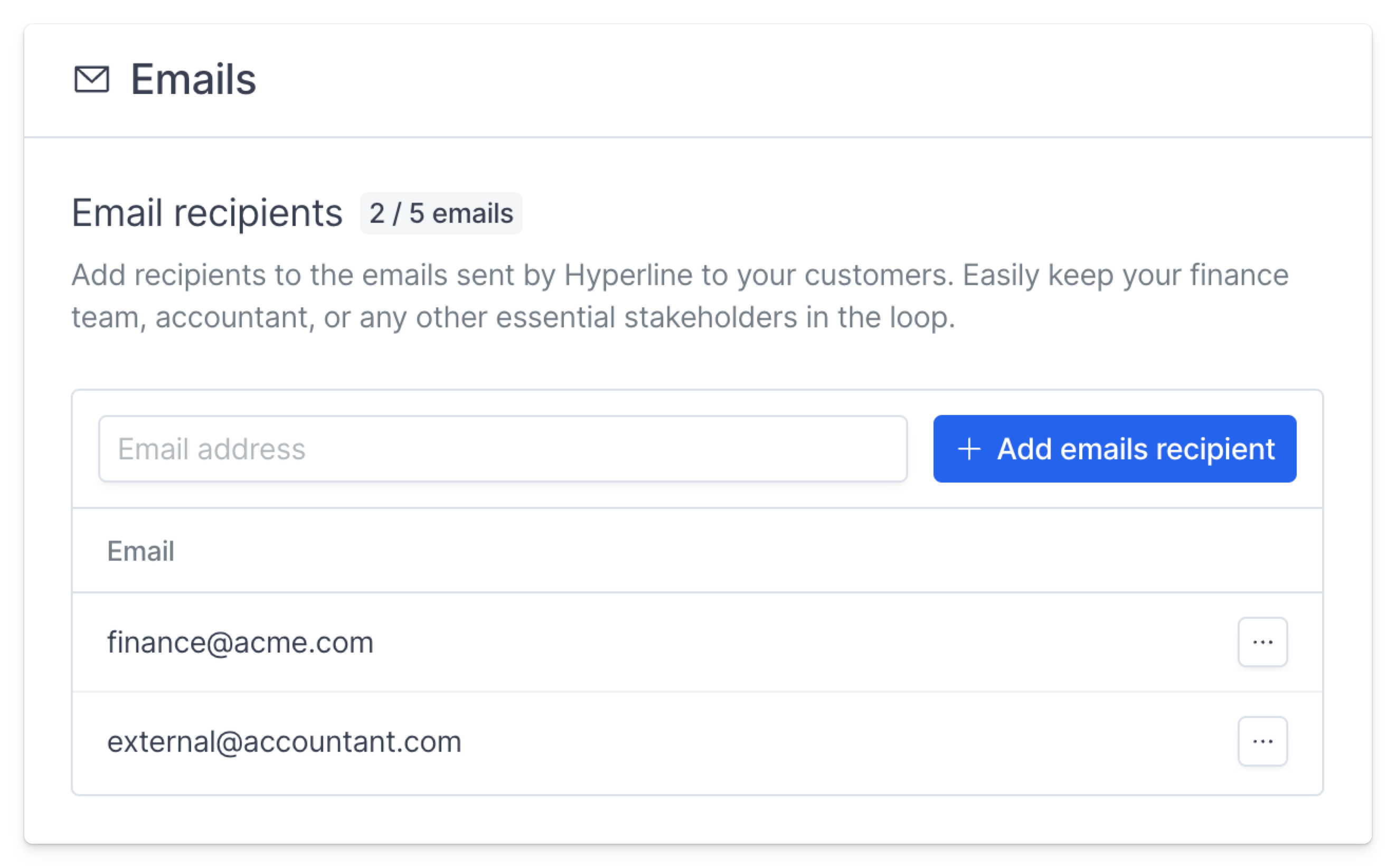
New login flow (including login with Google)
Hyperline’s users can now log in or sign up using a password or their Google account! Additionally, we added a reset password flow, and sign up is directly accessible from this page.